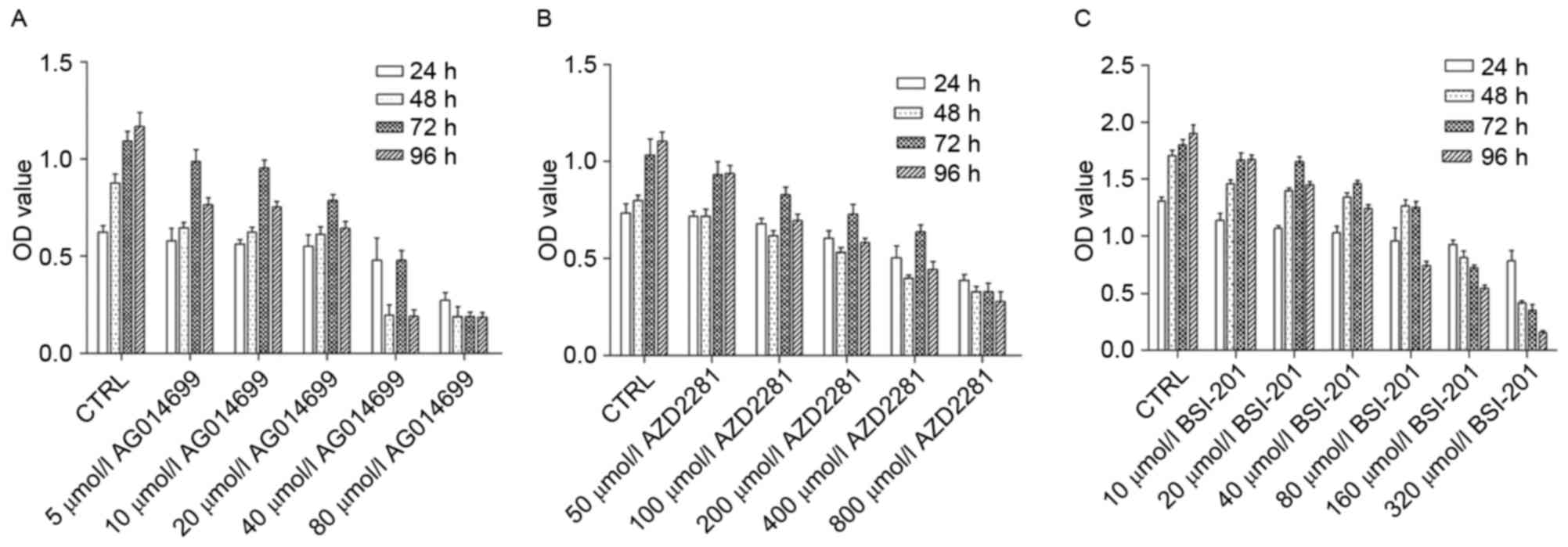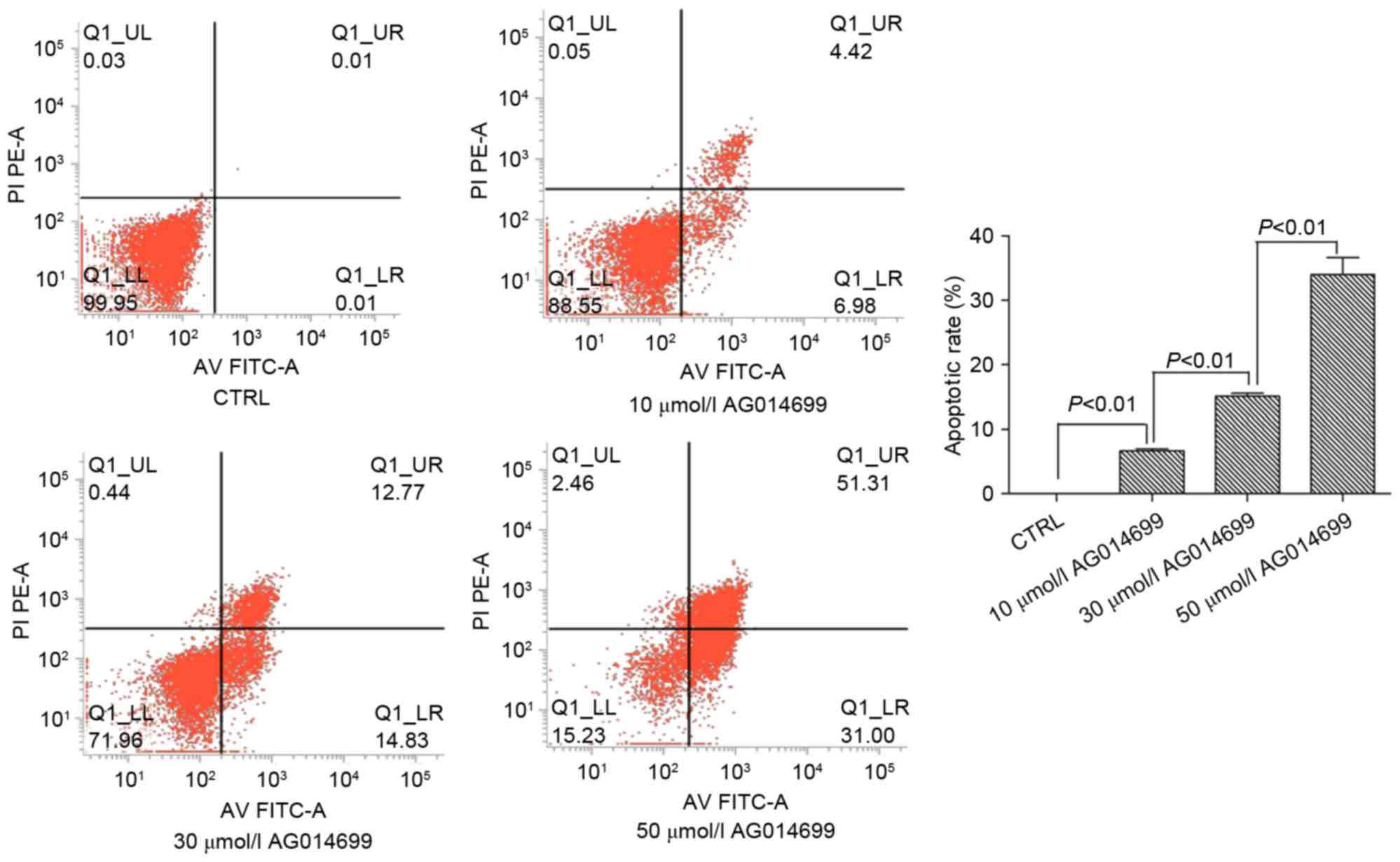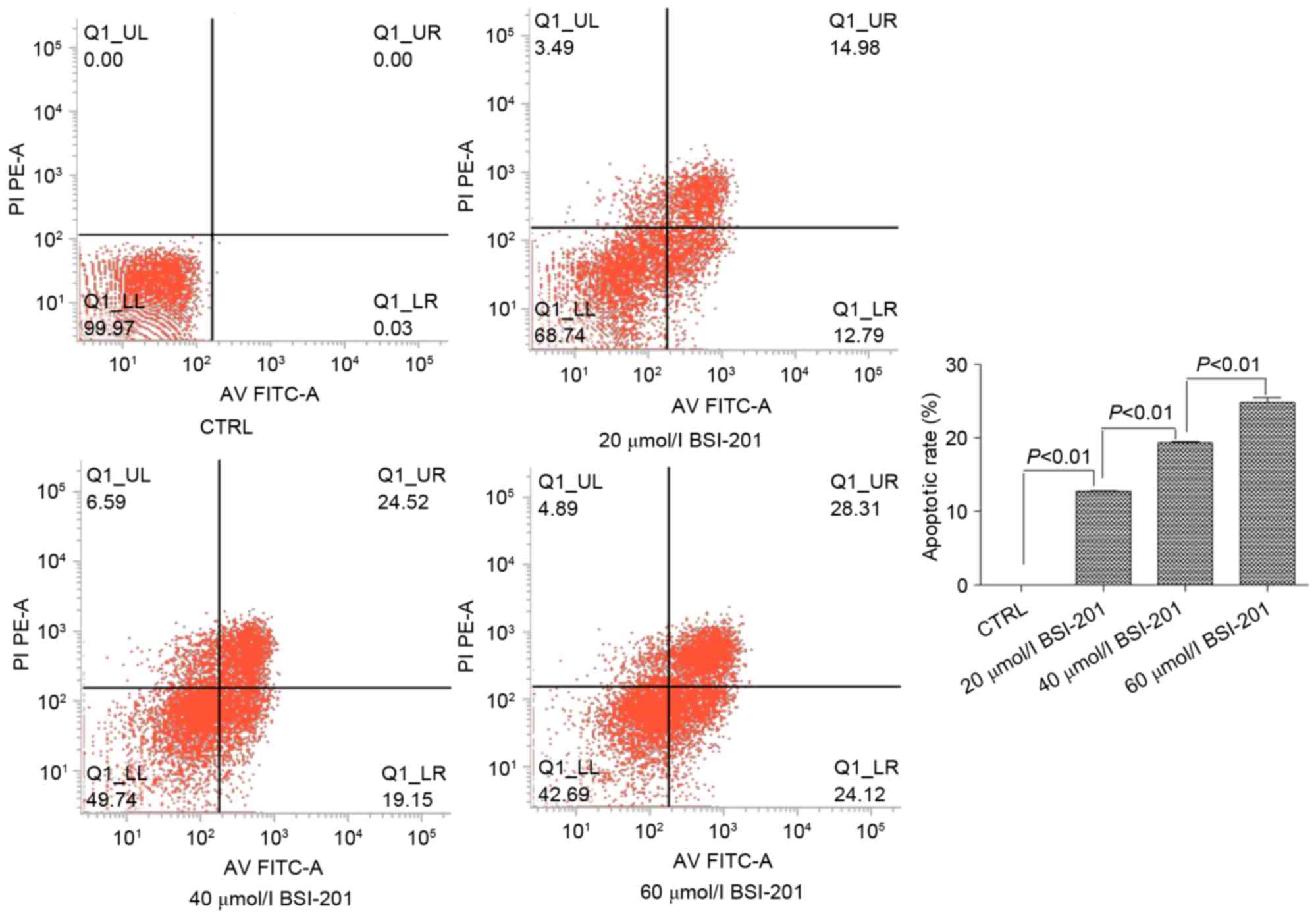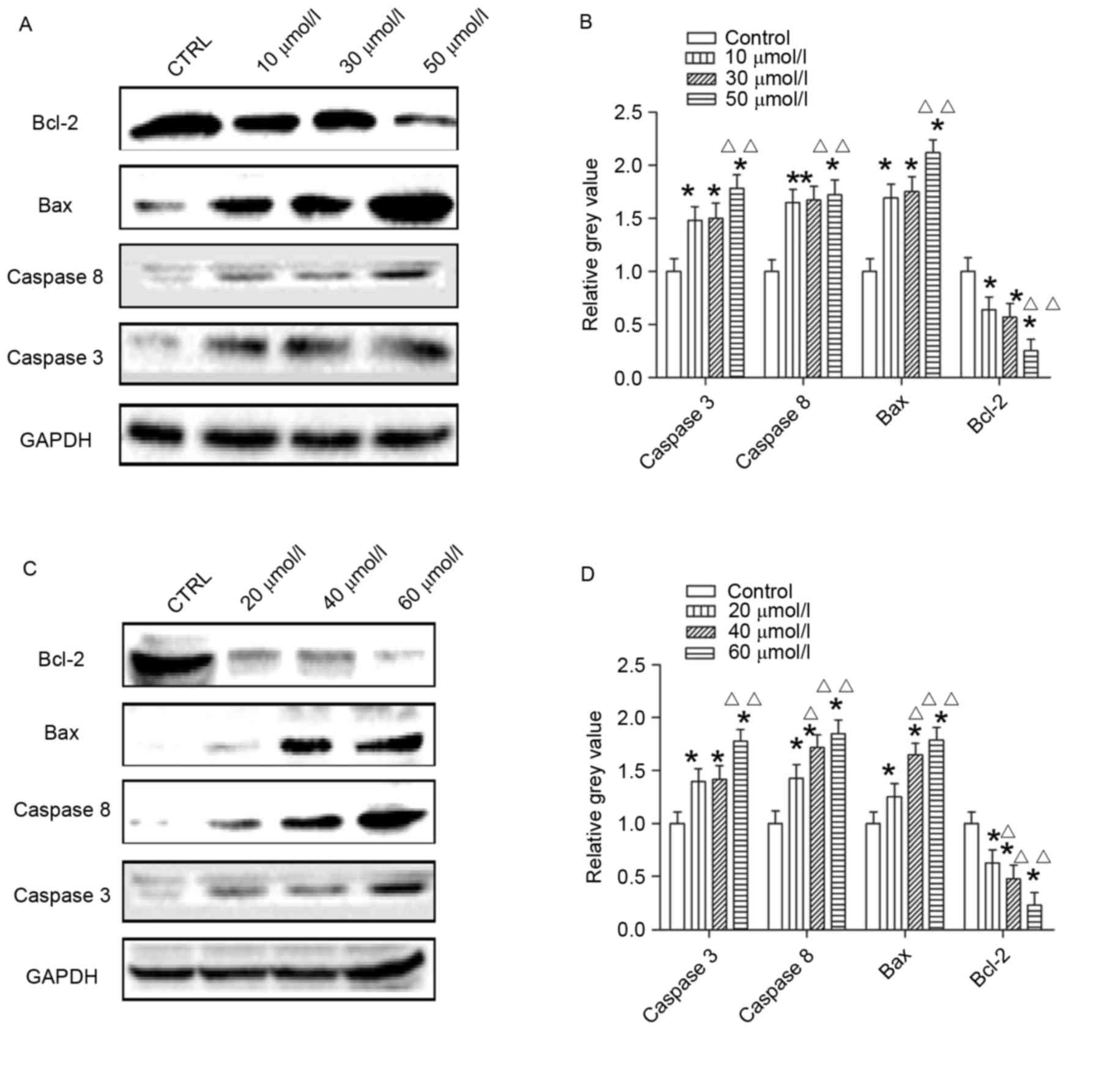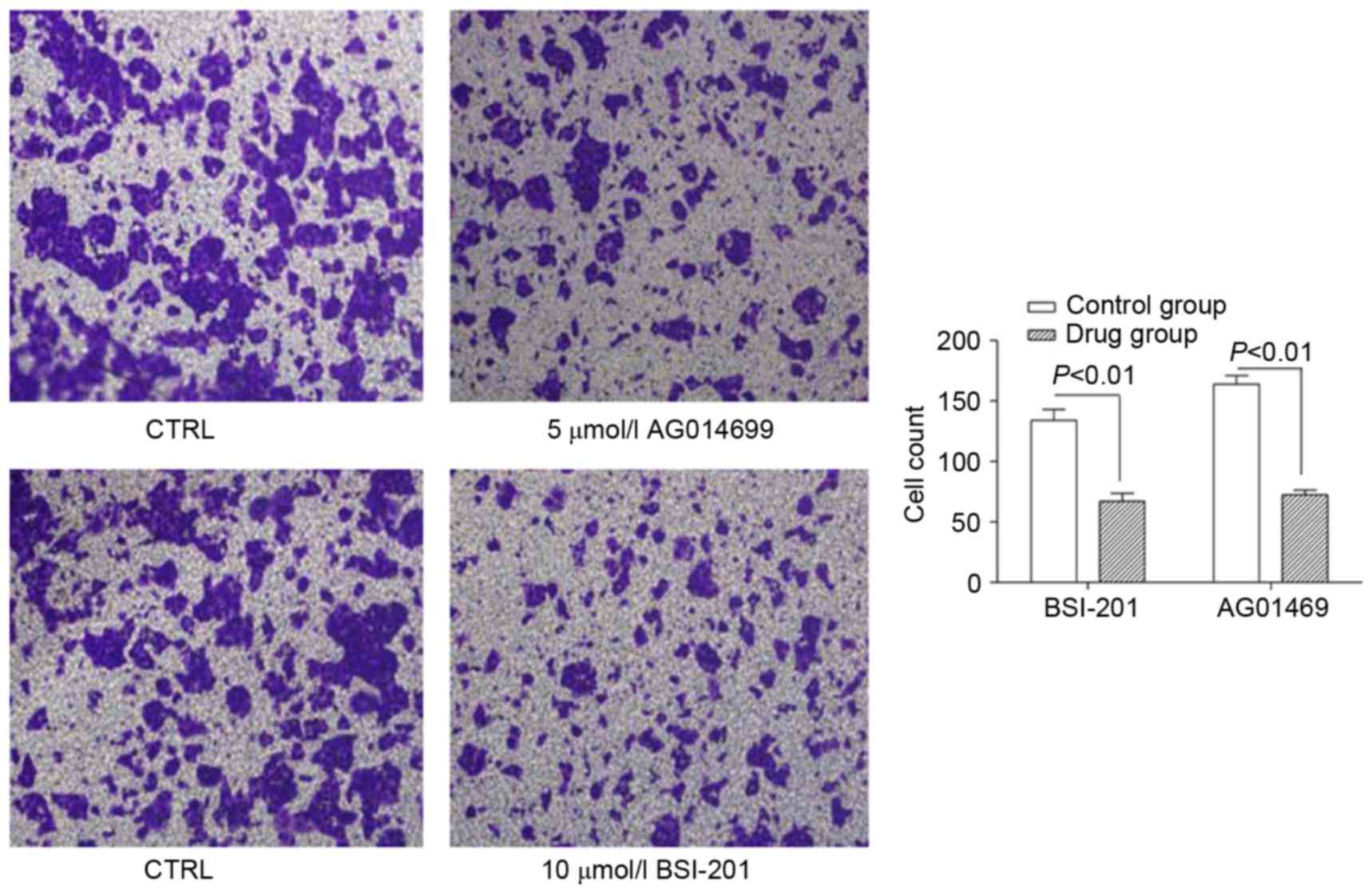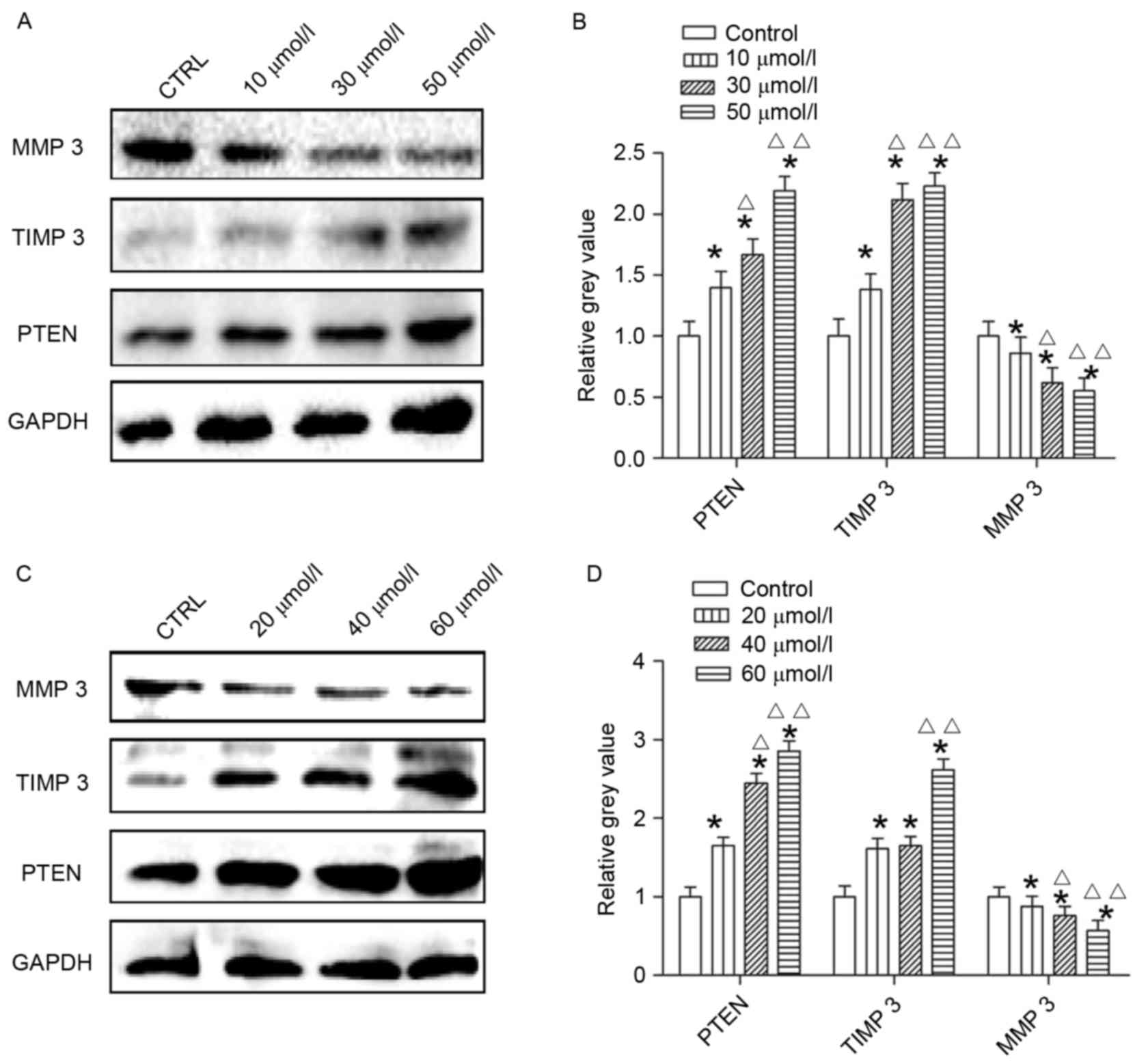Inhibitors of PARP-1 exert inhibitory effects on the biological characteristics of hepatocellular carcinoma cells in vitro
- Authors:
- Published online on: May 10, 2017 https://doi.org/10.3892/mmr.2017.6568
- Pages: 208-214
-
Copyright: © Mao et al. This is an open access article distributed under the terms of Creative Commons Attribution License.
Metrics: Total
Views: 0 (Spandidos Publications: | PMC Statistics: )
Total PDF Downloads: 0 (Spandidos Publications: | PMC Statistics: )
Abstract
It has been confirmed that the inhibitors of poly ADP-ribose polymerF(^9ase‑1 (PARP‑1) can inhibit the proliferation, apoptosis and invasion of tumor cells. However, the effects of inhibitors of PARP‑1 on hepatocellular carcinoma remain to be elucidated. The aim of the present study was to investigate the effect of three types of PARP‑1 inhibitor on the proliferation, apoptosis and migration of hepatocellular carcinoma in vitro. An MTT assay was performed to detect the proliferation of HepG2 cells following treatment with the PARP‑1 inhibitors, AG014699, BSI‑201 and AZD‑2281. Flow cytometry was used to detect the apoptosis of HepG2 cells, Western blot analysis was used to detect the protein expression of Casepase‑3, Casepase‑8, B‑cell lymphoma 2 (Bcl‑2)‑associated X protein (Bax), Bcl‑2, phosphatase and tensin homolog (PTEN), tissue inhibitor of metalloproteinase (TIMP) 3 and matrix metalloprotease (MMP) 3. A Transwell assay was performed to detect the migration of HepG2 cells. The results showed that AG014699, BSI‑201 and AZD‑2281 had an inhibitory effect on the proliferation of HepG2 cells in a time‑ and concentration‑dependent manner. AG014699 at concentrations of 10, 30 and 50 µmol/l, and BSI‑201 at concentrations of 20, 40 and 60 µmol/l induced the apoptosis of HepG2 cells, and the apoptotic rates were particularly high at 48 h (31, vs. 0.01%; P<0.01 and 24.12, vs. 0.03%, respectively; P<0.01). The protein expression levels of Caspase 3, Caspase 8, Bax, PTEN and TIMP 3 increased with increasing drug concentrations, whereas the protein levels of Bcl‑2 and MMP3 decreased with increasing drug concentrations, and were significantly different compared with those in the control group (P<0.01). In conclusion, AG014699, BSI‑201 and AZD‑2281 inhibitors of PARP‑1 significantly inhibited the proliferation of HepG2 cells, however, AG014699 and BSI‑201 demonstrated more sensitivity, induced apoptosis and inhibited migration of the hepatocellular carcinoma cells, which may be associated with alterations of the apoptosis signaling pathway and the expression of proteins associated with migration.



